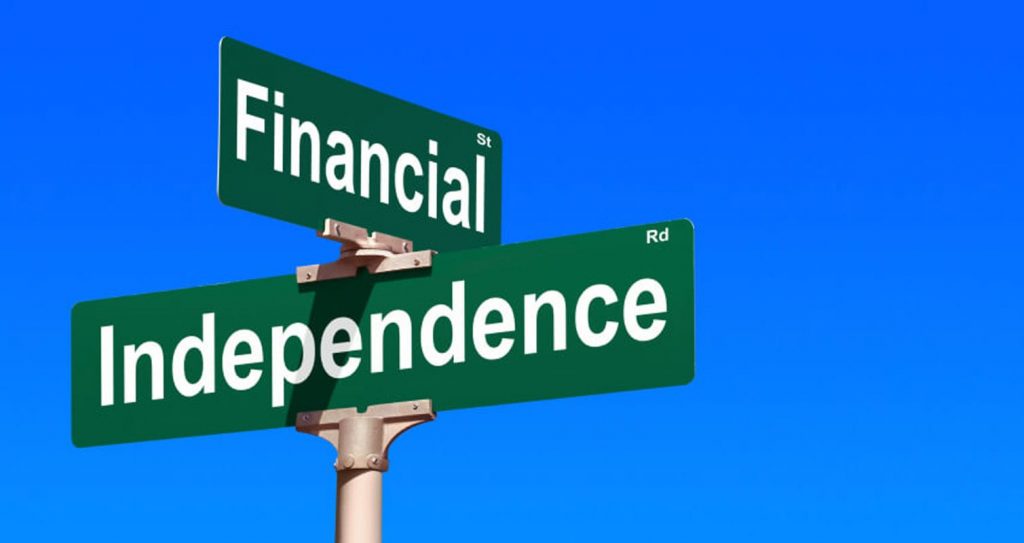Useful Metrics to Keep Motivated for Financial Independence
Financial independence can be a long, boring (ideally!) but also rewarding path. Here’s a look at some useful metrics to keep motivated along the way.
One of the best analogies for Financial Independence is of a journey to a distant place, except that this particular journey is measured in time and not miles. The path taken is unique for everyone; there are many different ways to get there (no ‘perfect’ way) and even the final destination is different for all.
But on any journey which spans a long distance or time, it’s encouraging to see milestones being reached since it means the destination is that much closer. So let’s take a look at different metrics that can help keep you motivated – how they’re defined and what they tell.
Net Worth
Net Worth is a common metric used in Personal Finance. It’s defined as
Networth = Assets – Liabilities
In other words, it’s how much (or how little) money you’d have remaining if you sold everything you own and put that towards all loans that you have. The traditional definition includes everything e.g. Retirement accounts, mortgages, car loans, car value, bank accounts etc.
I’ve listed some example values above that might be used to track progress or award yourself achievements. As you continue to save and invest for Financial Independence, this number should increase.
Although it’s an interesting metric, it doesn’t really indicate progress as such since it’s an absolute value. Does a net worth of $1,000,000 mean you’re Financially Independent? Not if you own a house worth $$2,000,000 and all your income goes towards paying the remaining $1,000,000 mortgage.

Net worth also depends on valuations of illiquid assets (i.e. hard to sell quickly) such as housing. I calculate my own net worth monthly out of interest, but there are significant monthly changes simply from whatever price Zillow.com reports about my house. I have no intention of selling my house, and I question if I’d even get that price (there’s typically a 6% selling commission for example), so I don’t find this metric that useful. It can also be a value people wish to keep private and not broadcast.
I find my own definition of wet worth more useful to me (it only includes liquid assets so it excludes retirement accounts and house value). Like net worth however, it helps more with showing your debt levels than showing progress to Financial Independence.
Earned Passive Income
I remember finding it interesting in reading Jane Austen’s books that society knew so much about everyone’s income; Mr Darcy had an income of £10,000 for example. But most people today don’t talk about their salaries / income. It is more accepted to publish and discuss passive income values however; everyone reaching for Financial Independence has it – it’s unbiased and impersonal.
Earned Passive Income earned is the amount of dividend / passive income paid out during a calendar year. Some sample targets / milestones are listed below; the values are skewed towards the low-end since a fair-amount of investments are needed.
The problem with this particular metric is that you have to wait until the end of the year to accurately calculate it. So a better alternative is Projected Income.
Projected Income
Dividend payments for the most part (in the US at least) are quarterly and tend to change only once per year. The yearly change sets the level for the next year of payments. So baring any major decline in a company’s fortune, it’s fairly accurate to calculate the dividend / income to be paid over the next twelve months.
The great benefit of projected income is that it can be calculated / updated immediately. If you don’t know right now what the future dividend increase of a stock might be, just use the current payments instead. Simply re-calculate the value as each dividend increase is declared for continual motivation during the year!
Savings Rate
Another common metric is the Savings Rate. This is defined as
Savings Rate = Amount Saved per month / Total Income per month
It’s normally expressed as a percentage e.g. 0.5 = 50%. The definition of what is “savings” may also vary based on your viewpoint.
In my own case, since I have three main uses of income (Living Expenses, Savings and Investments), I use
Savings Rate = (Total Income – Living Expenses – Investments) / Total Income
Since you’ll likely always have Living Expenses, then the Savings Rate will never reach 100%. But it’s useful as a measure to see how much of your income is being saved and if your lifestyle / budget is helping or hindering your journey.
The Savings Rate value will fluctuate monthly if your income is variable as dividend income typically is. If you calculate monthly values, the most useful metrics are the highest values in a given year, or a comparison to the value from the same month a year earlier. Comparing this month’s value to last month’s value is not so helpful if the income was significantly different.
I find a Living Expense Rate more useful to me due to my personal definition of Savings Rate; this is the percentage of my living expenses out of my total monthly income. Since I don’t have prescribed percentages in how much I should Save vs Invest, I’m interested in how much of drag my living expenses are.
Financially Free
None of the metrics above include an element of reaching your destination however; they’re all absolute values. To be able to know when you’ve reached your destination of Financial Independence, you need to know how much monthly income that will require. Ideally this will be in the form of a budget. I spend quite a bit of time in watching where my money goes because of this and recently updated my budget to a new version 4.5.
The Financially Free value is calculated with the following formula
Financially Free = Projected Income / Total Living Expenses
So if your projected passive income is $6,000 and your Living Expenses are $30,000 then you have a Financially Free value of 20% (6,000 / 30,000).
This metric is a simple percentage and tells you where you’re at; it’s a very slow moving percentage though unless you’re able to invest a whole lot of money each month. A value of 100% is equal to the so-called Crossover Point and means that your passive income is equal to your living expenses.
Once you have a percentage value, you can do other fun things with it – I use this value to calculate my Work-Freedom Day which is really just the percentage value mapped to a day in the year.
Summary
There are many metrics and ways to show progress and improvement as you journey to Financial Independence. Find metrics which mean something to you and wear them like a badge of honor!
What metrics do you use to show progress and keep motivated?


0 Comment